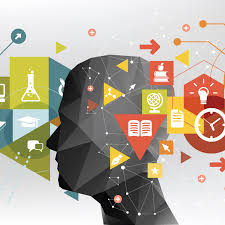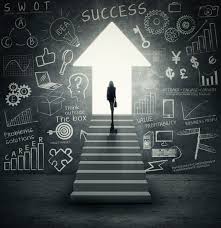
Welcome to the second week of January. This month is named after Janus, the Roman god of beginnings and transition. Pictures of Janus typically have two faces with one looking forward to the future and one looking back to the past. Today, January continues to be a time for looking forward and back, inviting us to rethink and reset how we work, lead, and live.
While you may resist the practice of New Year’s resolutions believing that they are doomed to fail, research shows that using dates such as birthdays and the new year creates a ‘fresh start’ effect that helps us galvanize aspirational behaviors to initiate and achieve goals. From a statistical perspective, people are more likely to successfully change behaviors on these days than other times throughout the year. Katy Milkman, professor at Wharton and author of How to Change: The Science of Getting from Where You Are to Where You Want to Be, finds that new beginnings marked by such dates “offer a kind of psychological do-over” where people can distance themselves from past failures, feel more optimistic about their future, and are more likely to set and follow through on goals.
However, this month can be about more than setting goals for exercise, health, and other habits. It can be a time for resolve – a time for deciding a more subtle, but equally powerful way of moving through a new year. What would it look like if you approach this year from a place of curiosity? And what might result from asking yourself at every possible turn “what can I learn from this experience?” What would it look like if your focus is being of service? And what would evolve if you asked yourself everyday “what can I do to positively impact this person, team, customer, or situation?” Resolutions such as these can have a tsunami effect on one’s life.
So, if you can take advantage of January as a time to reset and resolve new habits or perspectives, the challenge then becomes maintaining the focus and commitment well into 2022. Here are a few of my favorite strategies to launch fresh starts:
Envision What is Possible: Case Western Reserve University researchers Richard Boyatzis and Anthony Jack used fMRI imaging to confirm that holding a strong vision of what you want activates areas of the brain that are critical for motivation and behavior change. They encourage developing a vision not of what you ‘ought’ to do or be, but what you truly want to do or be to tap into this motivation. Taking time to deeply imagine this vision, to try it on, and feel it come alive in you requires reflective effort. What will it look like if you achieve what you desire? How will you feel? How will it impact the way you speak, act, move and think?
Consider Process vs. Outcome Oriented Goals: Once you clarify your vision, set process-oriented goals that are within your control. I’ll share an example from a soccer player I know who set the goal of scoring 10 times in the season. While this goal aligned with his vision of a winning season, it was largely out of his control since he couldn’t predict his playing time, opponents’ strength, etc. So, he shifted to three process-oriented goals: refining his left foot shot, improving his ‘take-off’ speed when sprinting, and mastering quick passes with the mid-fielder to better position himself for scoring opportunities. He could work on these goals everyday regardless of his playing time in games. Yet, progress with these goals positioned him well when the opportunities to step into the game came his way. It is no different at work. Let’s imagine your vision for 2022 is to listen more effectively to your team. Process-oriented goals such as reflecting for three minutes to quiet your mind before you going into a meeting, thinking about who will be present and what they might be experiencing, asking specific questions to check-in and see how they are doing, and practicing pausing to let others speak before you offer your opinion can position you well for listening. When you think about your vision, what process-oriented goals can you set that are within your control?
Create Favorable Conditions: To think about creating favorable conditions for yourself, consider the following questions: Do you need to protect your sleep to have the energy you need? How might consistent time spent with a trusted advisor help you? How might blocking off two hours a week to go to your favorite coffee shop and work on your vision help you make progress? Think about the environments that help you do your best work or be your best self. Consider the people who bring out your best. Determine the time of day or day of week when you feel the best. How can you create favorable conditions for yourself?
Anticipate Obstacles: What might stand in your way? Obstacles are to be expected. However, it is common to avoid thinking ahead and planning for what may be difficult. Anticipating obstacles isn’t about listing every possible thing that can go wrong, but rather making an honest assessment of potential pitfalls. Will a difficult relationship with one of your co-workers trigger negative behavior? Will a busy end-of-quarter keep you from doing the important innovative thinking your leadership requires? Having a strategy in place when things don’t go as planned can help you avoid the ‘what the hell effect’ that results from hitting roadblocks, which can tempt you to give up and surrender your vision.
Harness Your Drive: Perhaps nothing can help you succeed at your vision more than understanding why it is important to you. This idea ties back to visions that you want vs. visions that you ought to have. Think of the difference between committing to a health regimen because the doctor tells you that you should vs. committing to it so that you can be agile and prepared for an upcoming ski reunion with your friends. Understanding your ‘why’ gives you a strong emotional connection to your goals as it creates an alignment between what you are choosing and your core values. Research confirms that the area of your brain that processes emotions is engaged when you make decisions. And when you have a powerful emotional connection to your goals, you are more likely to make the positive decisions to move forward and experience progress. Why is your vision important to you today? What will the rewards be if you are successful executing this vision? What will your life be like if you forego this vision? What do you want to say about this situation in five years from now?
As we move through January, there is the opportunity to reset and intentionally decide how we want to work, live, and lead. Never has there been so much ground-breaking research in the areas of behavior science, neuroscience, and psychology to support a reset. Some of my favorites include the work of Harvard Medical Doctor Susan David, Wharton Professor Katy Milkman, and CEO Whitney Johnson. I hope you find their work and research helpful as well.
I wish you the very best for 2022.
Maureen

 Last week I took an adult ballet class.
Last week I took an adult ballet class.
 Case Western Reserve University professor, Richard Boyatzis’ Intentional Change Theory documents how a strong vision of one’s ideal self in a particular situation helps to support sustainable behavior changes that positively impact performance. And I have found in my work that a significant factor in this ideal self-vision is an appropriate and intentional mindset.
Case Western Reserve University professor, Richard Boyatzis’ Intentional Change Theory documents how a strong vision of one’s ideal self in a particular situation helps to support sustainable behavior changes that positively impact performance. And I have found in my work that a significant factor in this ideal self-vision is an appropriate and intentional mindset. Decide what you can and cannot control. Many behavior scientists and psychologists agree that identifying what is within your control creates a sense of self-efficacy. This process allows you to channel nervous energy in a positive direction. What actions can you take today to improve your situation?
Decide what you can and cannot control. Many behavior scientists and psychologists agree that identifying what is within your control creates a sense of self-efficacy. This process allows you to channel nervous energy in a positive direction. What actions can you take today to improve your situation? Engage in the power of giving. Last Sunday a customer at the Coaches Bar and Grill in Ohio left a $2500 tip on his $30 tab, a sizable gift to help the workers who had just learned that their restaurant was closing due to the Coronavirus pandemic. Nothing creates a sense of wellbeing during turbulent times like giving. Harvard Business School professor, Lara Aknin and her team of colleagues researched the impact that giving has on people across the globe. They found that the positive psychological effect of helping others in need is universal, and in terms of happiness and satisfaction, the act of giving can create an effect of doubling one’s income.
Engage in the power of giving. Last Sunday a customer at the Coaches Bar and Grill in Ohio left a $2500 tip on his $30 tab, a sizable gift to help the workers who had just learned that their restaurant was closing due to the Coronavirus pandemic. Nothing creates a sense of wellbeing during turbulent times like giving. Harvard Business School professor, Lara Aknin and her team of colleagues researched the impact that giving has on people across the globe. They found that the positive psychological effect of helping others in need is universal, and in terms of happiness and satisfaction, the act of giving can create an effect of doubling one’s income.